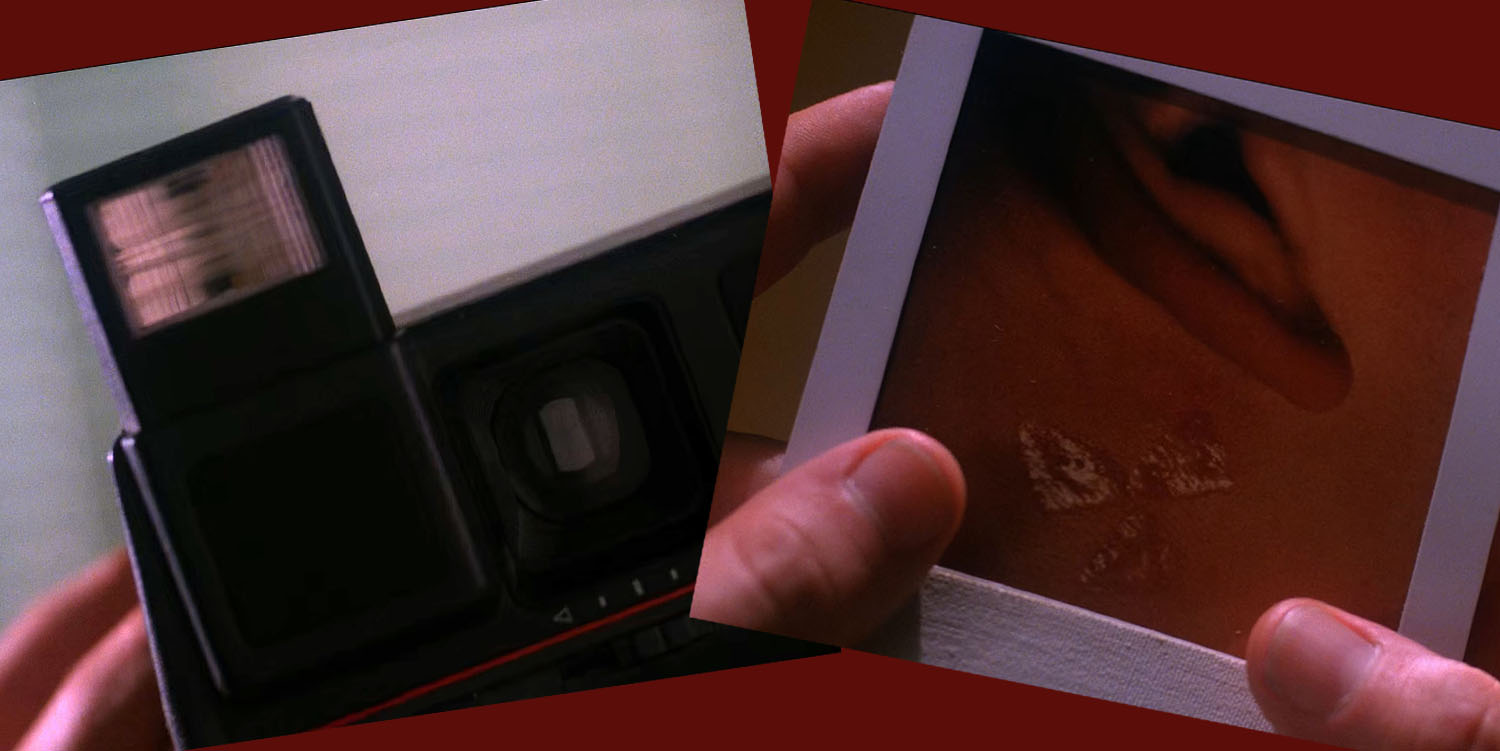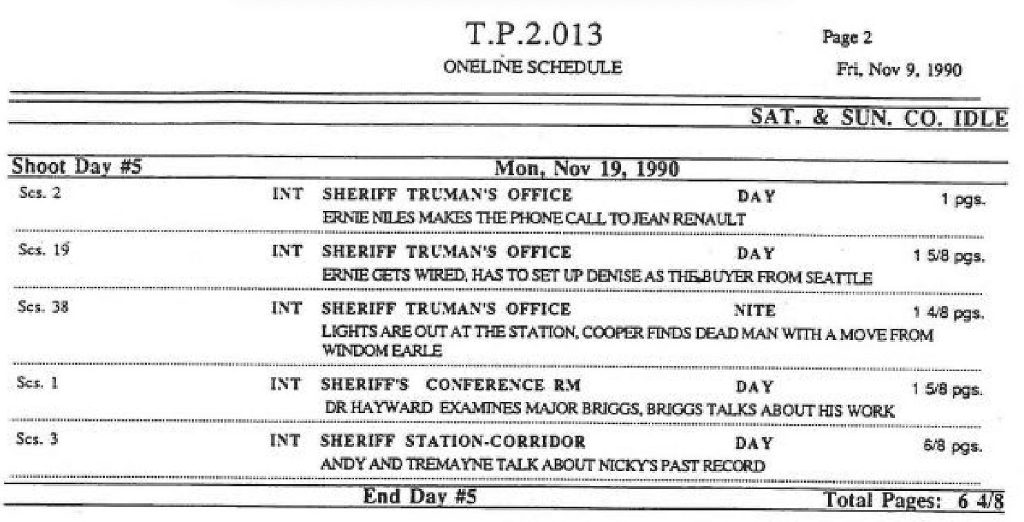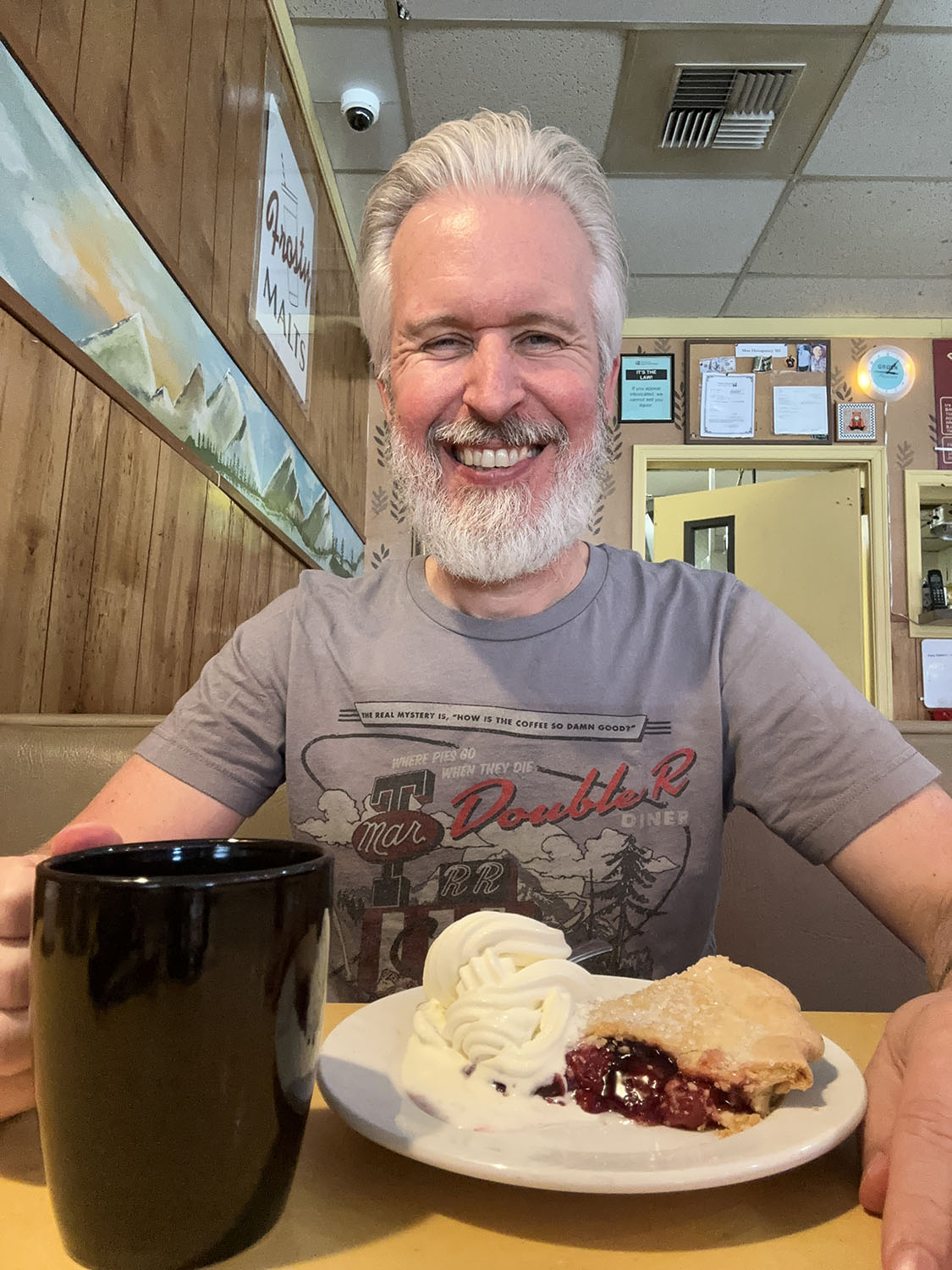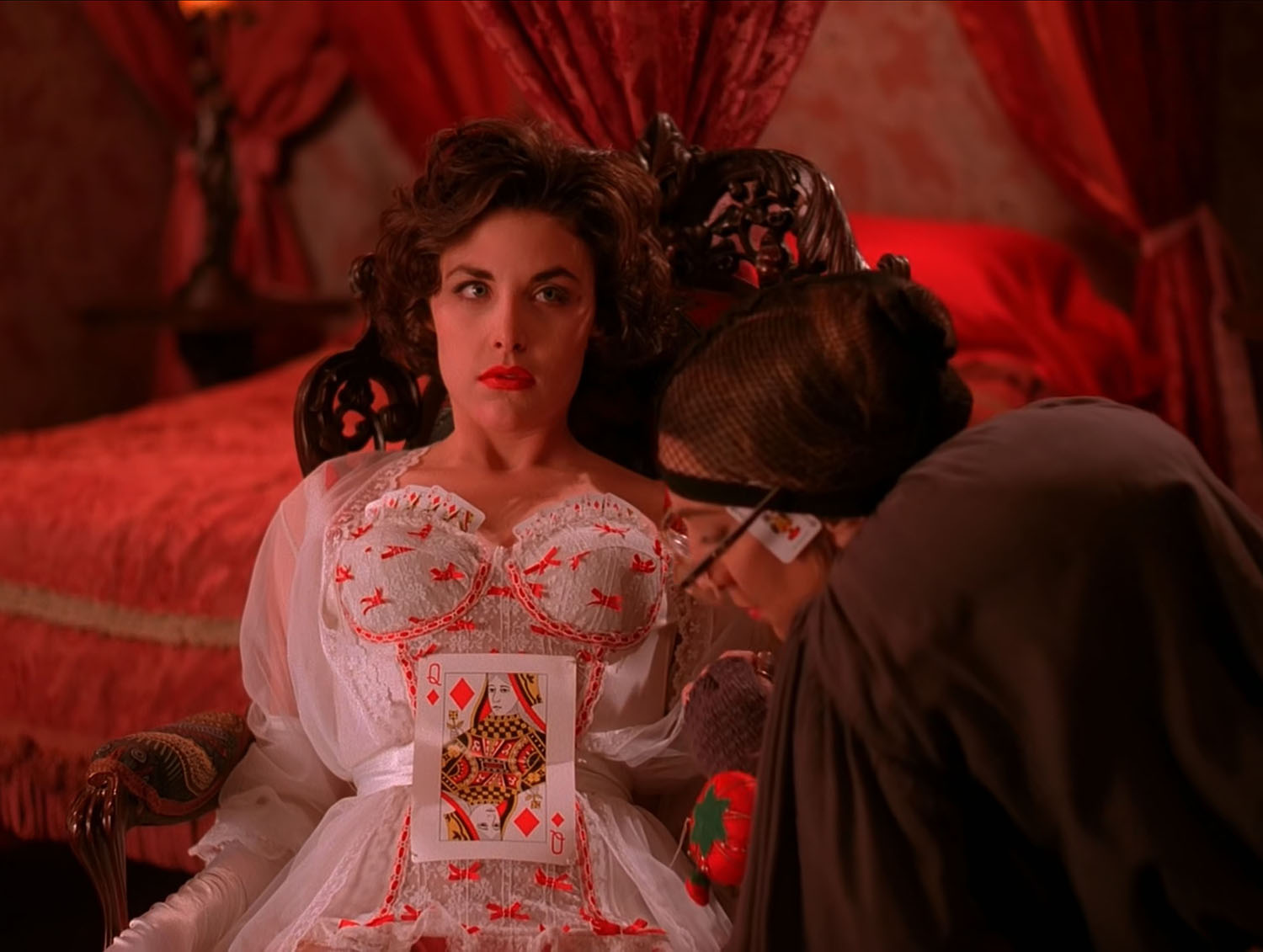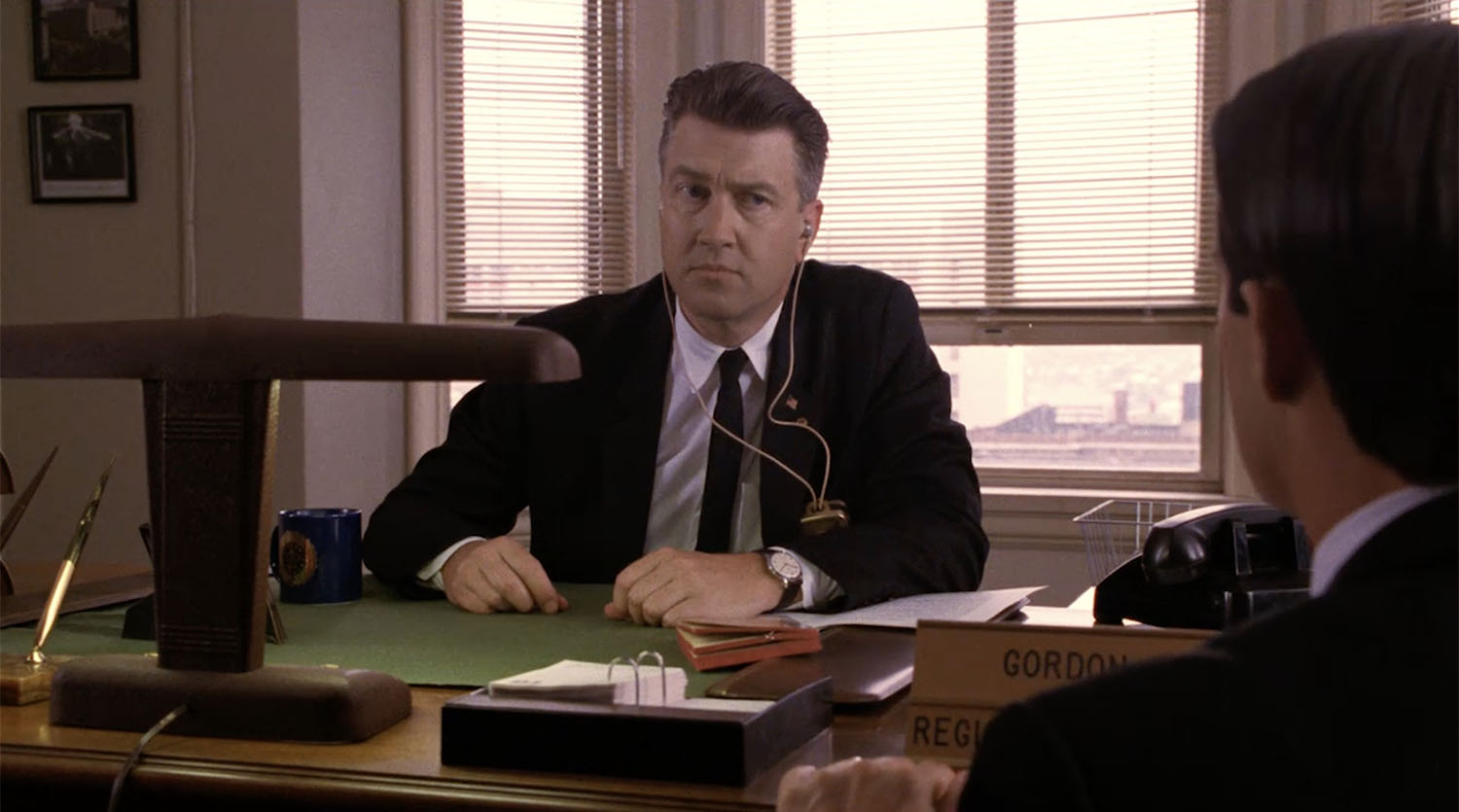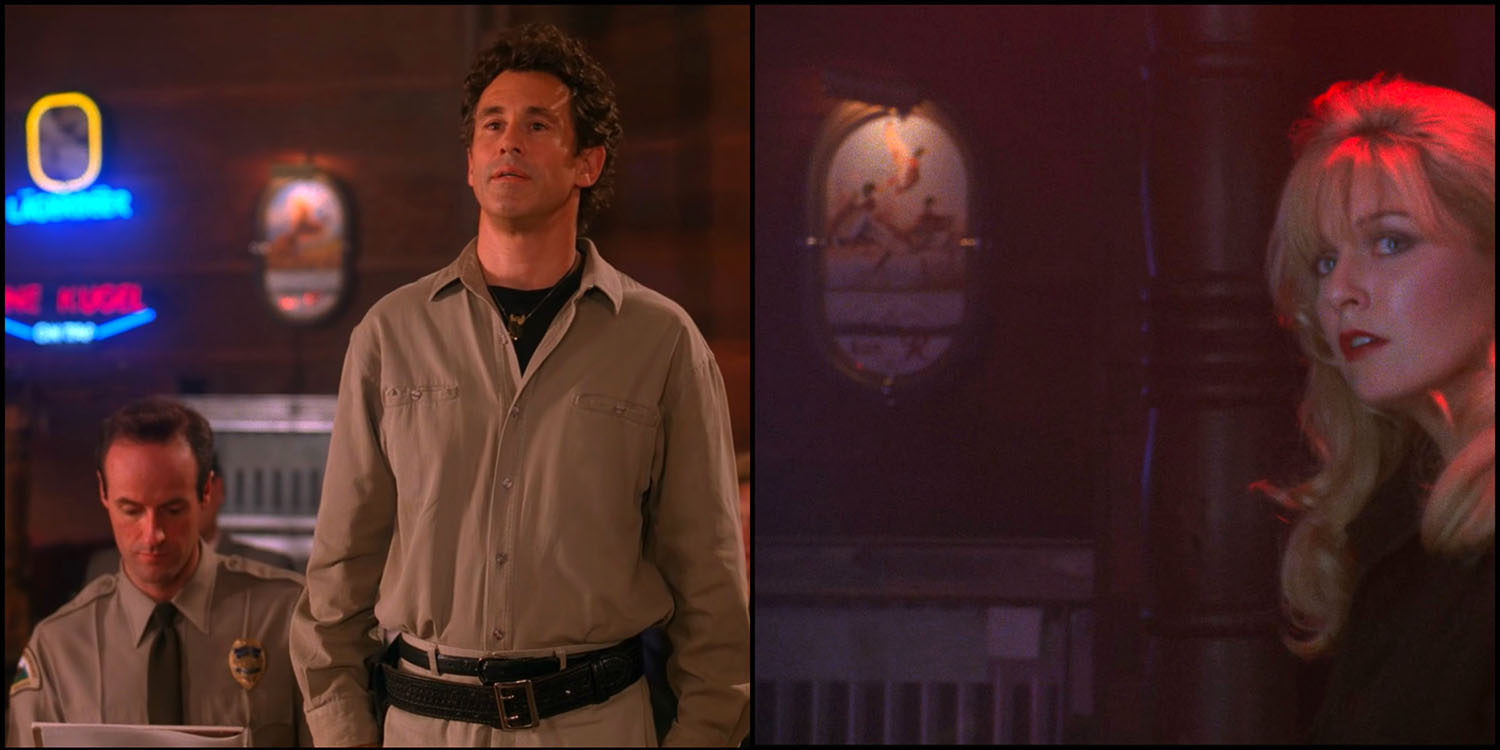Looking back at the first two seasons of Twin Peaks, I can’t help but think some mysteries may have been solved or documented differently if today’s modern technology was used. Take the instant photograph Dr. Hayward takes of Major Briggs’ neck in episode 2.013. If this scene was shot today, Doc would have used his mobile photo to take a photo. Instead, he used a vintage Polaroid camera famous for producing square images.
DR. HAYWARD’S TAKES A PHOTO OF MAJOR BRIGGS’ NECK
Harley Peyton wrote the first draft of episode 2.013 on October 18, 1990 with a second draft distributed to department heads on October 31. The rest of the crew and cast received the script on blue pages on November 7.
The scene was the second to last shot on the Twin Peaks Sheriff’s Department set in Van Nuys, California on Monday, Nov. 19.
Peyton’s script described the on-screen action.
INT. SHERIFF’S CONFERENCE ROOM – DAY
Briggs seated in the same armchair inside the conference room. AGENT COOPER and SHERIFF TRUMAN gather around him. DR. HAYWARD completes a physical exam, has just snapped a poloroid [sic] of the Major’s head – hence the second FLASH of light.
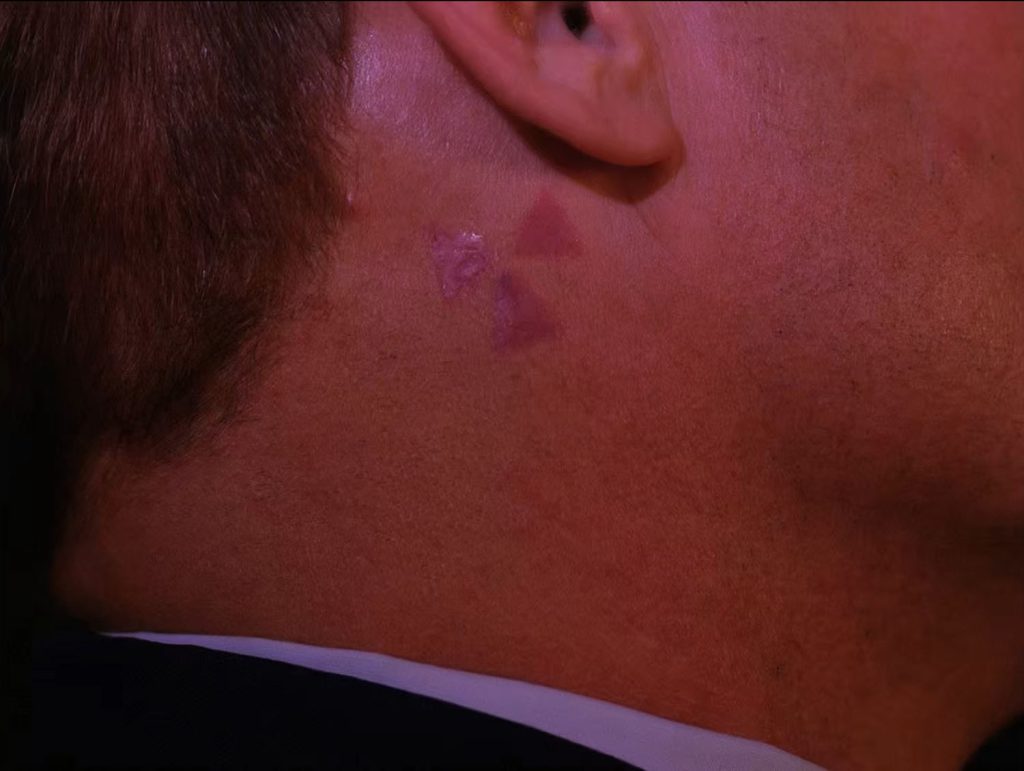
A flash of white light reveals the first image of Briggs’ neck with a three-triangle tattoo just below his ear.
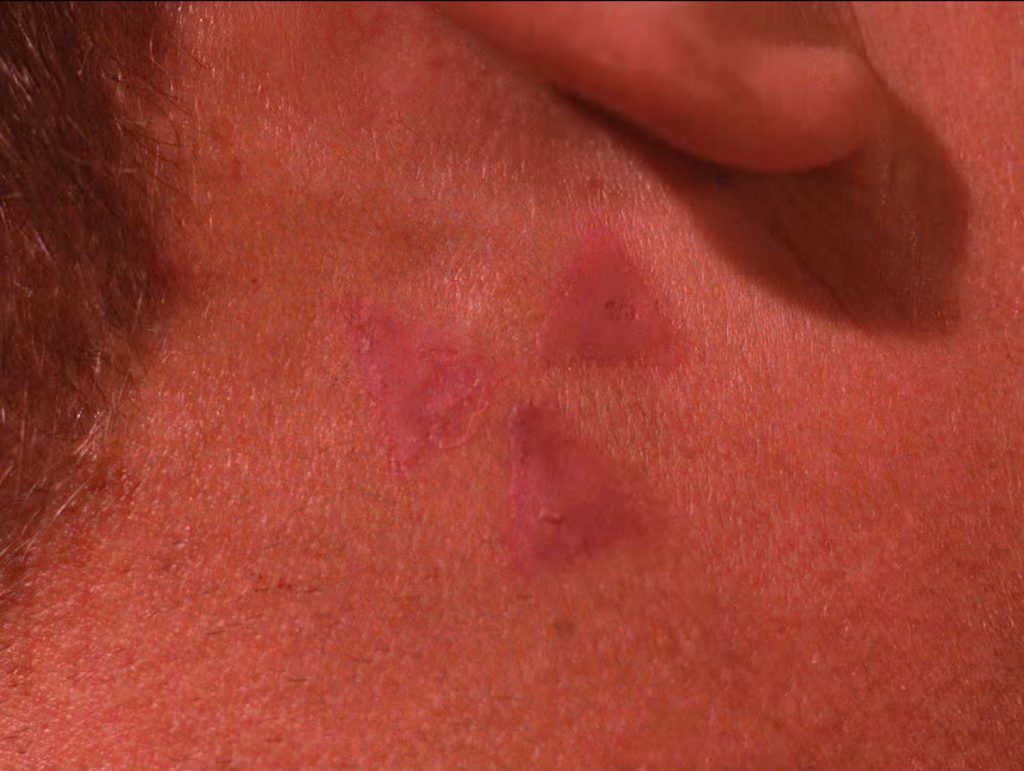
After another white flash on-screen, the image cuts to an even closer look at the tattoo.
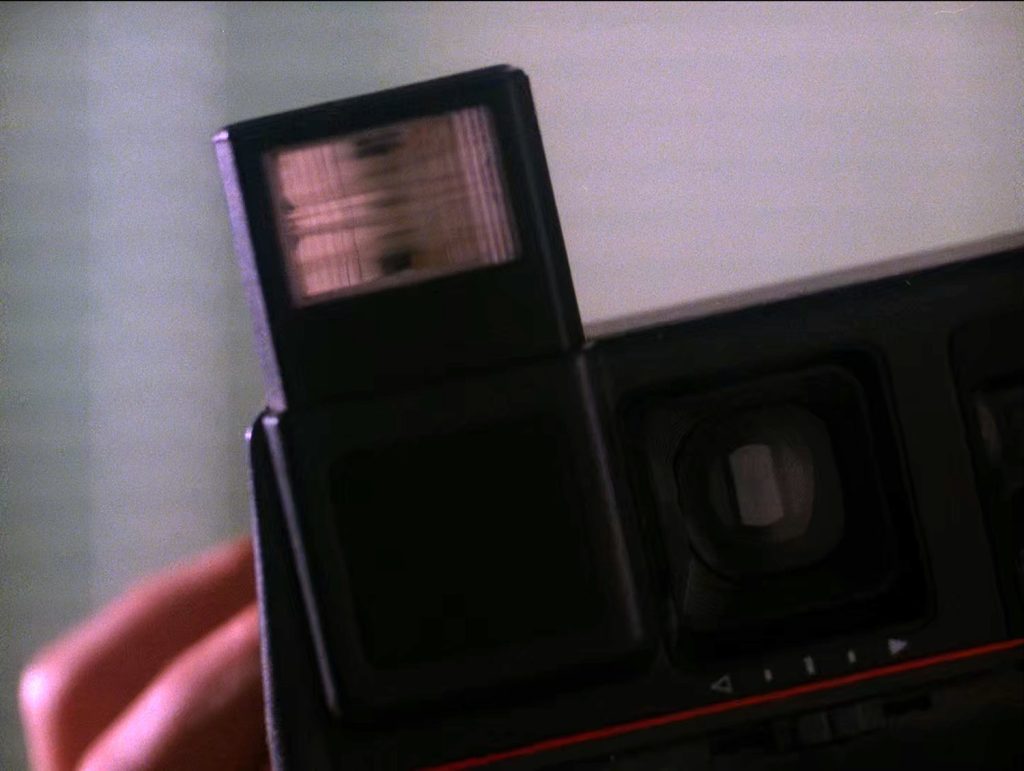
The scene cuts to a close up on a camera flash.
BRIGGS
(answering Cooper’s query)
Enough to cloud my mind and memory.
HAYWARD
(receiving undeveloped print, reporting his findings)
Three triangular scars behind his right ear. In perfect proportion
Using this pop-up flash image, I quickly found the make and model of Dr. Hayward’s camera – the Polaroid Impulse.
POLAROID IMPULSE CAMERA
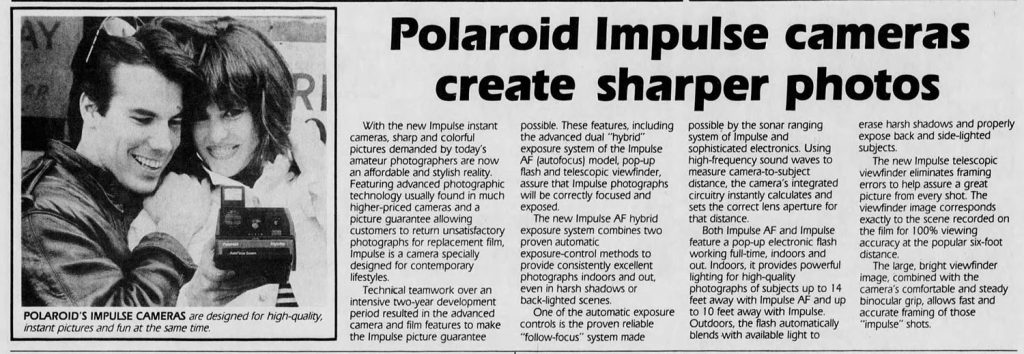
Edwin H. Land created his first instant camera during World War II. By 1948, Land’s hobby project turned into Polaroid Corporation. Their early cameras required the photographer to perfectly time the development of the film by submerging the film in chemicals. Images were originally sepia-toned until 1950 when Polaroid released black-and-white film. By the 1960s, the film would “develop within a minute before the eyes of the user.” Color prints were introduced in 1963 and non-peel-apart color prints followed in 1972. Five years later, Polaroid held two-thirds of the instant camera market.
But as a new decade dawned, interest in instant photograph declined as more people embraced now affordable 35-millimeter cameras.
“These days, a lot of cameras are inexpensive and easy to use,” said Polaroid spokesperson Allan Verch in an 1988 article by Rick Ratliff published in the Detroit Free Press. “It takes a toll on Polaroid, because people can buy an inexpensive 35-millimeter camera at a price similar to that of an instant camera.”
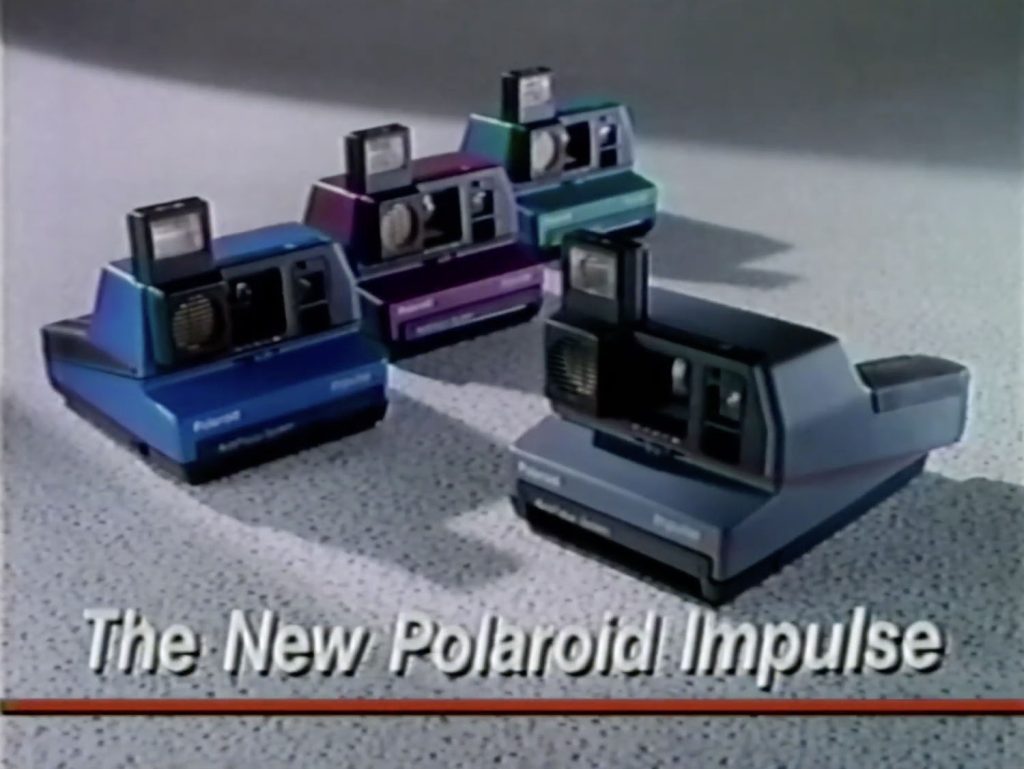
In development for two years, Polaroid introduced the Impulse camera in May 1988. These plastic cameras were offered in four “fashion colors” including luster gray (Dr. Hayward’s color), burgundy, lapis blue and jade green. The suggested manufacturer retail price was approximately $69 or $89, the latter having automatic focus. This focus feature was an important selling point for the Impulse as the company wanted photographers to feel reassured their images would be correctly focused and exposed.
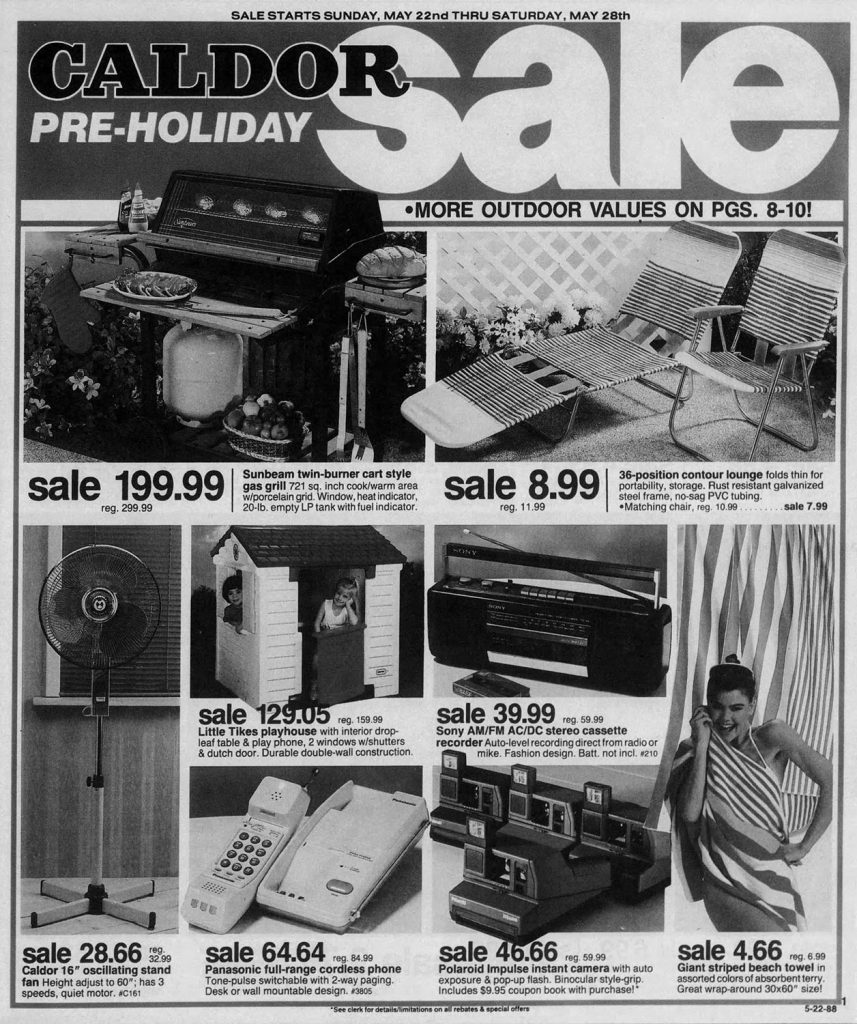
By May 22, 1988, Polaroid Impulse cameras began appearing in newspaper ads such as this one from retailer Caldor in New Jersey. Retail was listed for $46.66. These cameras regularly sold for $59.99 (slightly lower than suggested pricing) and included auto-exposure, a pop-up flash and binocular-style grip.
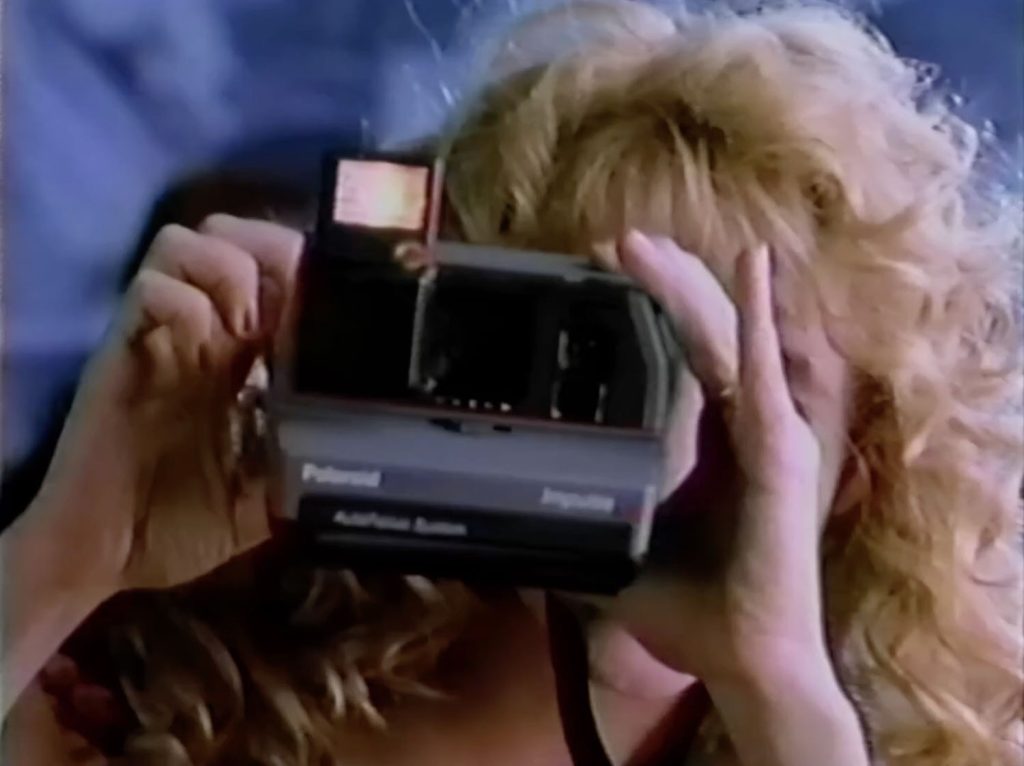
Polaroid’s Verch said the company designed the camera for “women and men ages 18 to 34 with incomes of $20,000 to $27,000 a year” (about $53,500 to $72,000 today). To reach that audience, the company created a $10 million advertising campaign starring Rosanna Arquette who had recently appeared in Desperately Seeking Susan and After Hours. She would appear later that summer in my favorite 1988 film, Luc Besson’s Le Grande Bleu (The Big Blue).
The commercial had Arquette “impulsively” snapping dozens of images while shopping for clothes. At the time, The camera used Polaroid’s 600-series integral film. Film costs were $10 for 10 images, about three-times as much as traditional 35-millimeter film.
Polaroid Group President, Bill O’Neill, said during the Impulse introduction events held in April 1988 that “20- to 35-year olds make up the largest segment of the American marketplace [at that moment.” This could explain why they chose Arquette in an attempt to appeal to younger demographics.

Their youthful advertising campaign was echoed in print ads like this one from The Los Angeles Times. Even the camera’s box packaging had pictures that Rick Ratliff described as “delirious young people horsing around with the camera.”
The spontaneous picture-taking fun would come to an end when Polaroid discontinued the Impulse in 1994.
While the crew who worked on Twin Peaks may have matched Polaroid’s desired demographic, there was a practical use for this instant camera on set.
Continuity photos were critical to ensure costuming, set decorations, props and other details matched from set-up to set-up. They didn’t have iPhones with the ability to quickly organize all images via folders. These Polaroid images, like the one of the late Kenneth Welsh as Windom Earle in episode 2.022, are priceless as they offer unique behind-the-scenes looks long before modern technology caught up.
I’m wondering if Dr. Hayward’s camera was the crew’s continuity camera.
APPEARANCES IN TWIN PEAKS
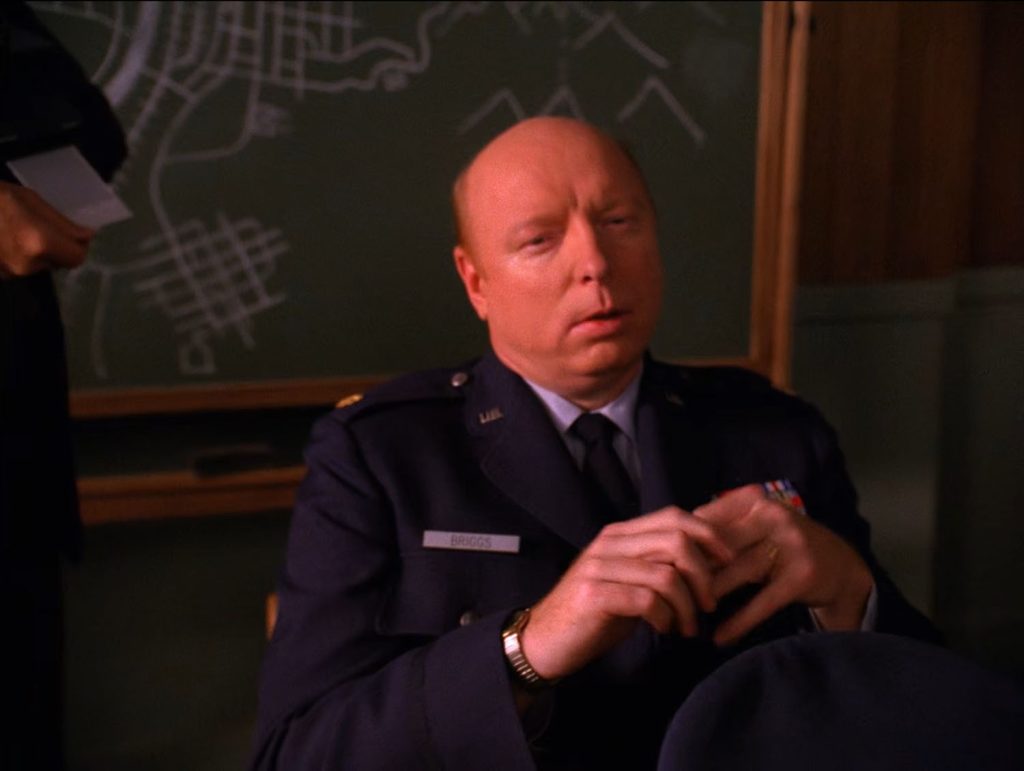
As Major Briggs describes his experience, you can see Dr. Hayward removing the undeveloped Polaroid photo he just took of the Major’s neck.
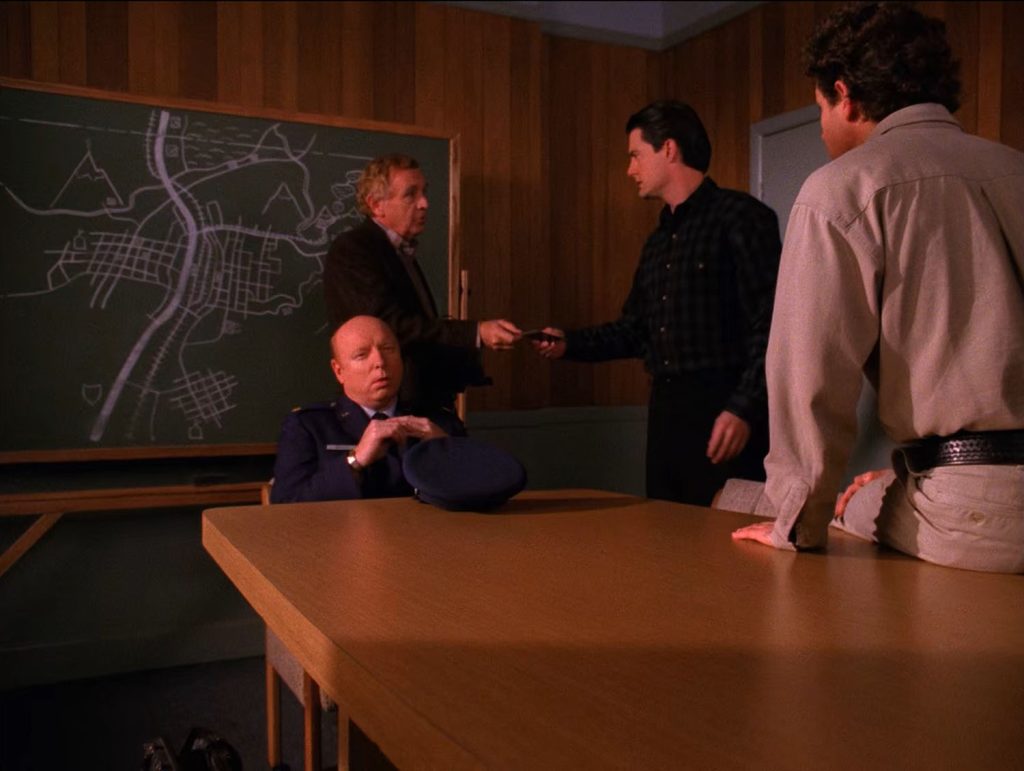
He hands the image to Deputy Cooper as Briggs continues talking about his ordeal.
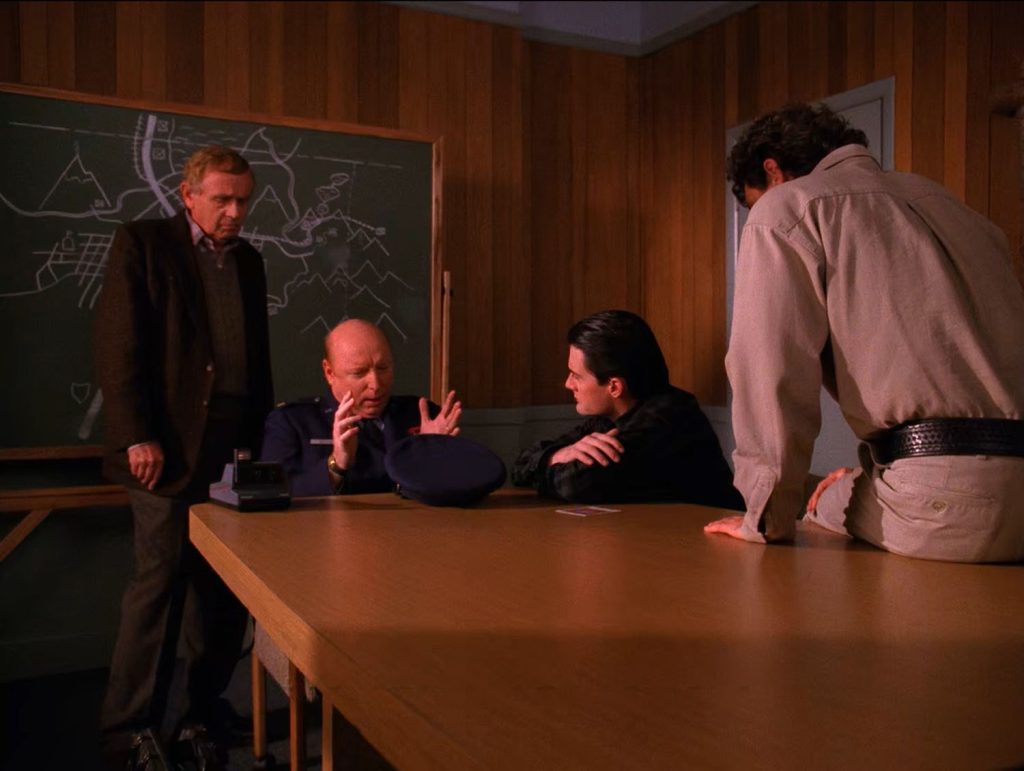
Hayward eventually places the camera on the conference room table at the Twin Peaks Sheriff’s Department. It will remain there for the rest of the scene.
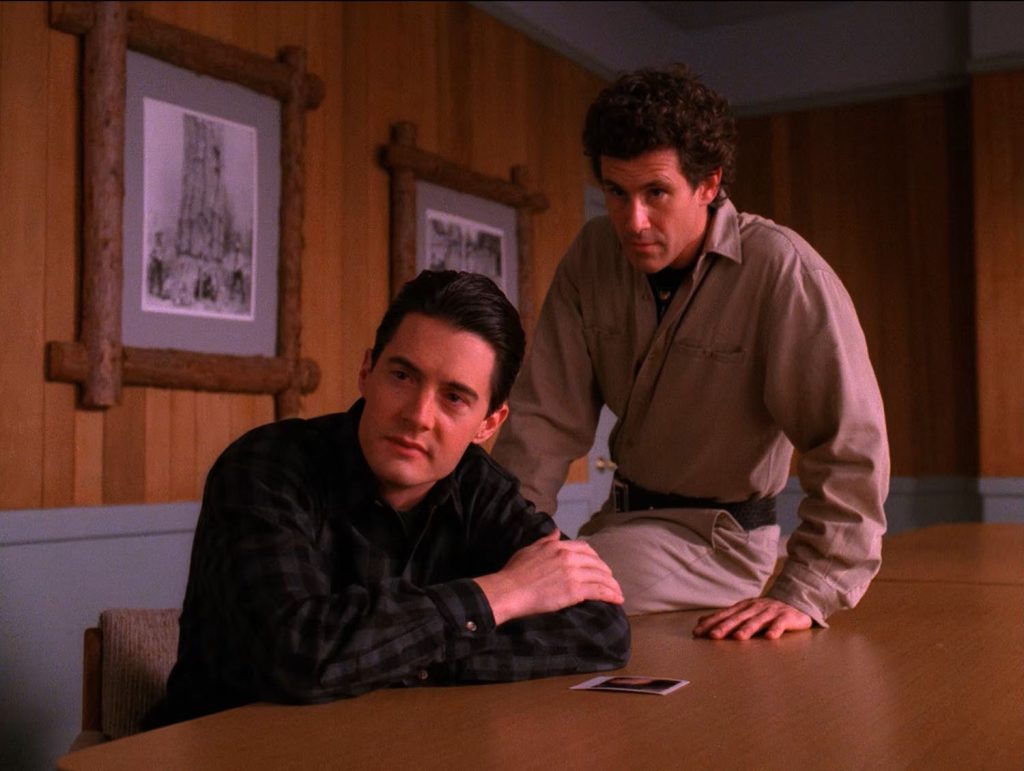
Cooper and Truman listen intently to the Major as the Polaroid photo develops on the table.
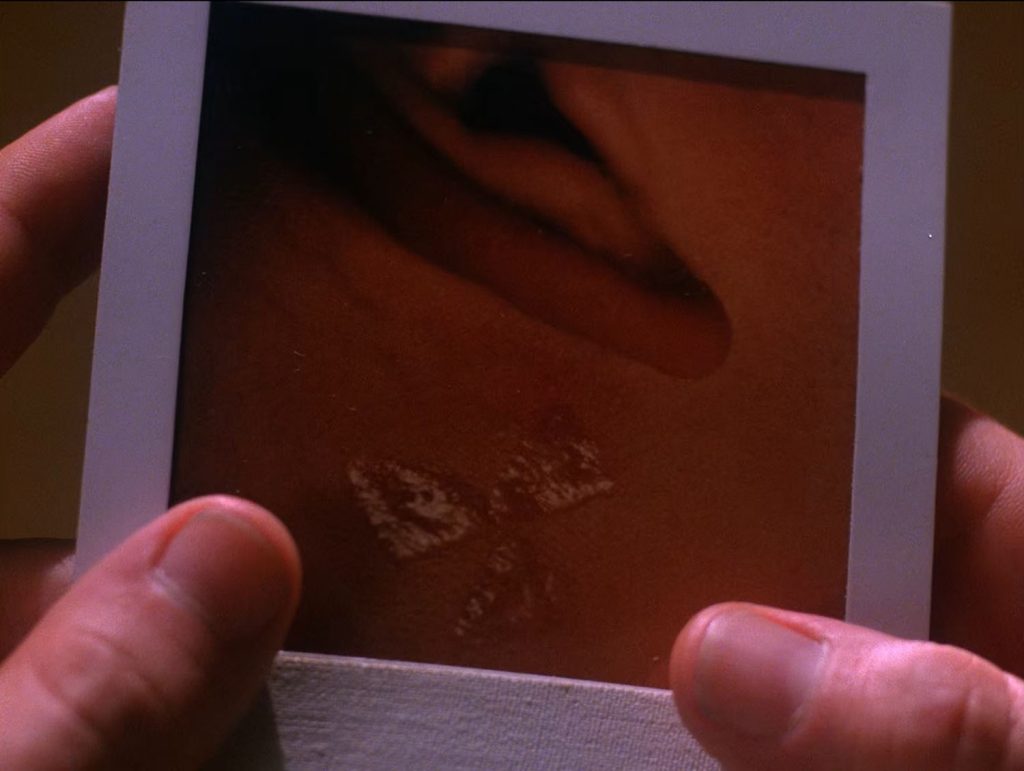
After the Military Police escort Briggs from the conference room, there is a close-up of Cooper holding the Polaroid. The scripted action is slightly different than what appears on screen.
With that, the MP’s lead Briggs from the room. Hayward looks at the poloroid [sic], now developed. He hands it to Agent Cooper. Three scars behind the Majors right ear in perfect proportion. Just then: a drop of WATER falls from above, splatters upon the image From a fire sprinkler overhead. Just like the one that heralded Bob’s flight to freedom.
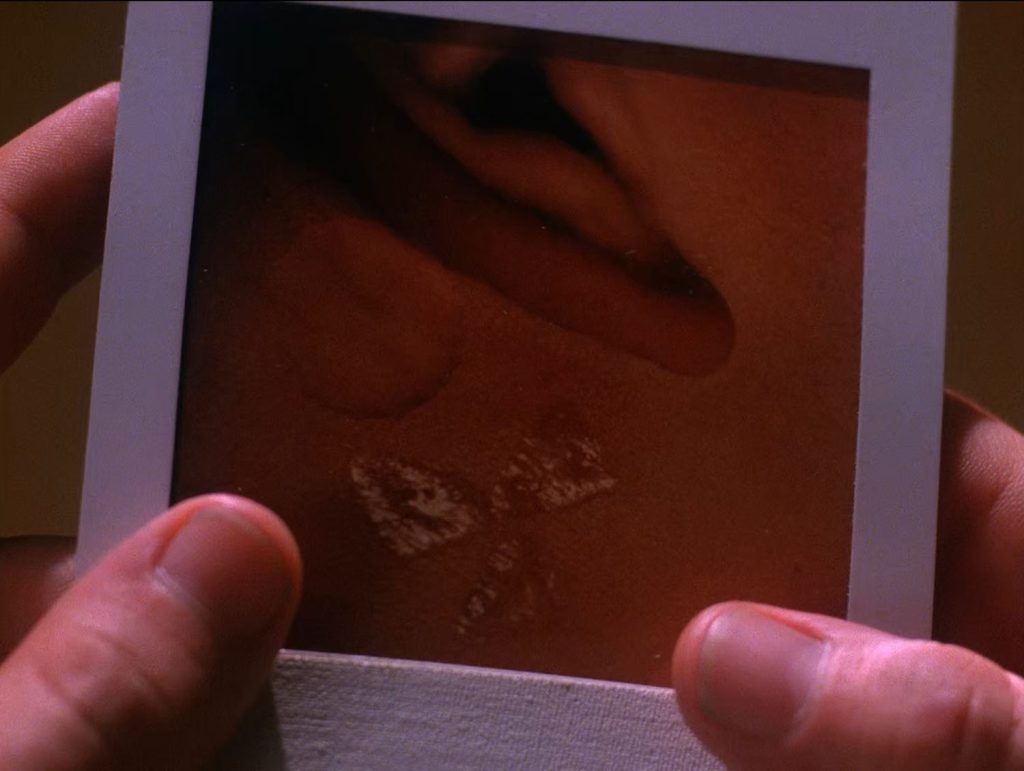
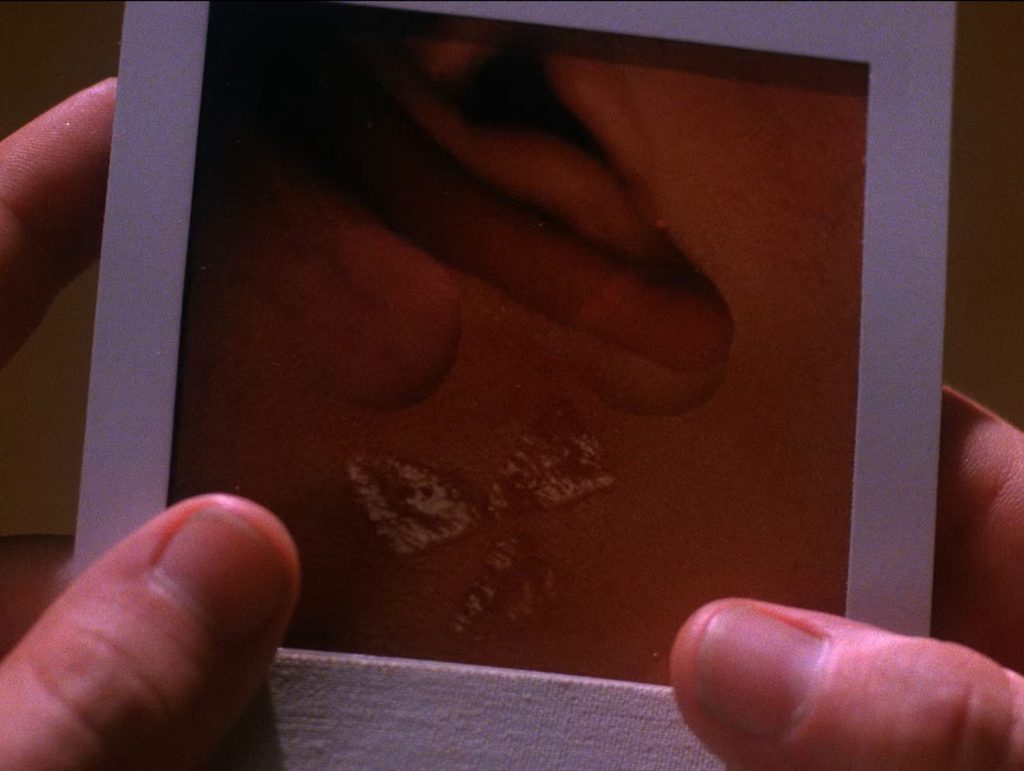
The reference to BOB and the fire sprinklers from episode 2.009 somewhat explains the sense of foreboding I felt watching the fire sprinkle head dripping water.
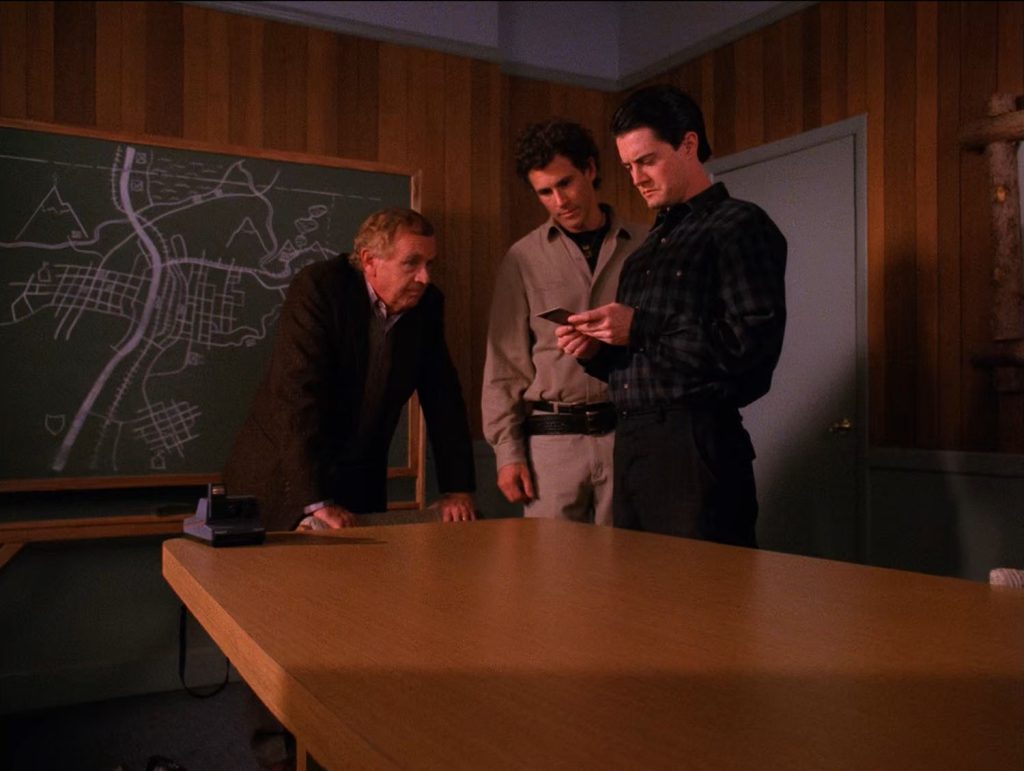
The scene ends with the three sharing a moment as Cooper runs his finger over the Polaroid image.
Discover more from TWIN PEAKS BLOG
Subscribe to get the latest posts sent to your email.

